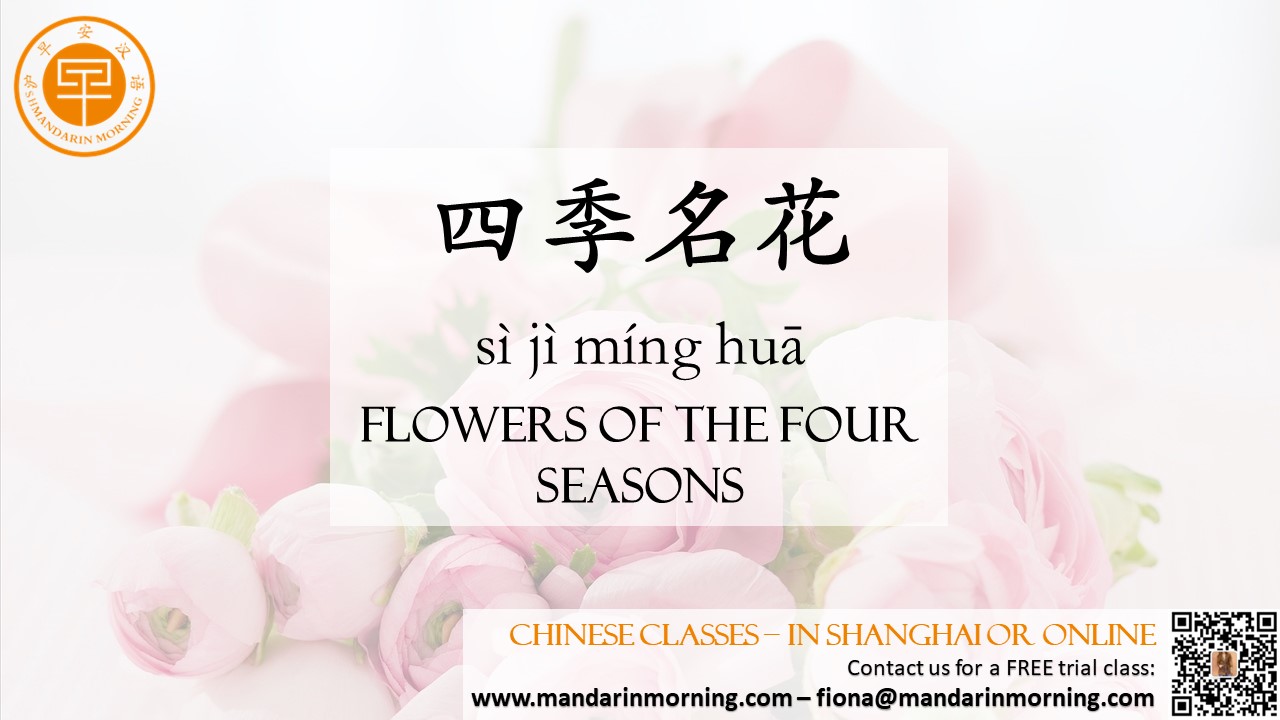| As the blossoming season approaches, you can see the floral touch of spring everywhere around. Peaches, cherries, magnolias, and other beautiful flowers and trees have already begun to bloom. Learn all you need to know about flower culture in China!  Flower Culture: Importance of Flowers For centuries, 花 (huā), flowers have been important in Chinese culture. They’ve appeared in many poems, paintings, culinary, and also took part in traditional ceremonies and festivals. 01. Flowers of the Four Seasons The Flowers of the Four Seasons is a Chinese idea that shows how different flowers represent each season. The concept reflects the Chinese appreciation for the beauty of nature and the cyclical rhythms of life. 四季名花 (sì jì míng huā) - Flowers of the Four Seasons The flowers that represent each of the four seasons consist of: Spring: 春兰 (chūn lán), orchid Summer: 夏荷 (xià hé), lotus Autumn: 秋菊 (qiū jú), chrysanthemum Winter: 冬梅 (dōng méi), plum blossom 02. Symbolism of Flowers Flowers hold deep symbolic meanings in Chinese culture, often representing virtues, emotions, and natural elements. Here are some of the most popular flowers in China and their cultural symbolism: Peony (牡丹, mǔdān): prosperity, wealth, and honor. It’s often called the “king of flowers” and it was used to decorate emperors’ palaces. Chrysanthemum (菊花, júhuā): longevity and nobility. It’s often associated with autumn and featured on pottery, artwork, and clothing. Chrysanthemum tea is also great medicine for curing internal heat and fever. Lotus (莲花, liánhuā): purity and perfection. Lotus grows in muddy water but remains unstained, thus it symbolizing the ability to rise above hardships. Orchid (兰花, lánhuā): beauty, elegance, and refinement. Orchids are known for their beauty and elegance in Chinese culture; they are used to describe something of great beauty. Plum Blossom (梅花, méihuā): resilience and hope. Plum blooms in the harsh winter, symbolizing the ability to overcome adversity. |